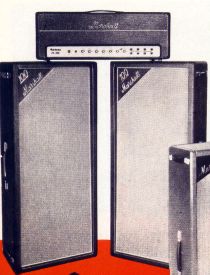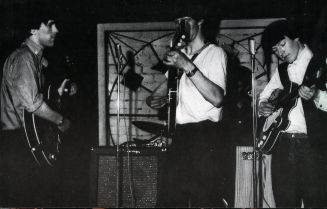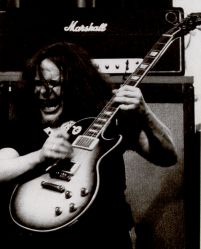STEPPING OUT AT THE REDCAR JAZZ CLUB
by Chris Scott Wilson
Redcar Jazz Club. No better magnet on England's North-east coast
during the 1960s on a Saturday (dance night) or Sunday (sit-down audience night) than The
Coatham Hotel on Redcar's seafront where the Jazz Club promoted the finest bands England
had produced. There was one golden rule before joining the queue to buy your ticket: Always
check the alley behind the hotel to ensure a Ford Transit 6-wheeler was parked there.
If there was, then you knew the band had arrived.
A 6-wheeler Tranny screamed BIG TIME. Not a
4-wheeler, box-shaped, good enough to do the job, or maybe good enough for the support
band. Nah, it had to be 6 wheels. Bull-nosed with wheel spats at the back where the twin
wheels on either side oozed mile-devouring power. A bench seat from a scrapped Jaguar
bolted facing forward behind the driver's seat, back against a wooden partition to seal
off the cab from the cargo bay. Or airline seats if you really had enough cash. And if you
knew what you were doing, the very expensive jigsaw of amps, speaker cabinets, drum cases
and guitars would fit tightly in the back. You think bands only care about their image on
stage? Wrong. A 6-wheeler was, well, cool, and it had to be white or black. And dirty. The
dirtier the better. It showed you had put in the miles. A dirty white 6-wheeler had been
around. And it just about knew the way home.
Sitting in even a moderate-sized venue today, you
can stare at a stage backed by a solid line of Marshall stacks in front of a custom
backdrop, a forest of microphones surrounding the elaborate kit on the drum riser, a row
of wedge monitors stage-front and then on either side a P.A. system the size of a block of
apartments, a complex studio-style mixing desk out in the audience seating area, overhung
by a lighting rig big enough to guide in jumbo jets at Heathrow, the whole lot needing a
road crew in double numbers to operate it, break it down and shift it all someplace else.
It seems almost inconceivable a band with the status of Cream could carry all their
equipment in the back of one 6-wheel Transit. But they could. And did. |
 |
| The first time Cream played the Redcar Jazz Club on Sunday 13th November 1966, their
equipment comprised one Gibson Les Paul sunburst for Eric, a Fender 6-string bass for
Jack, one grey 100 watt Marshall stack each, Ginger's trademark silver double-bass drum
Ludwig kit and a Marshall 200 watt (yes, 200 watt*) P.A. amp through one 4x12 speaker
column on each side of the stage. No drum microphones, only what bled of Ginger's
pile-driving rhythms into the vocal mics at the front of the stage. No monitors - they
hadn't been invented. No mixing desk - even studios then didn't have comprehensive ones -
the musicians balanced the sound themselves from the stage. It was the first Marshall P.A.
I had seen and I swear the system cranked enough volume to howl like a hurricane when one
of the roadies walked past a live microphone. |
 |
And Cream were deafening. There were no mood-setting lights, just a
couple of hard white bulbs aimed at the stage while the rest of the hall was almost
plunged into darkness. Not a small venue compared to those Cream had cut their teeth in,
London clubs like Klook's Kleek, the Flamingo or the Marquee, in reality usually damp
cellars where they earned some £40 for a night's work; instead the Windsor Ballroom in
the Coatham Hotel held some 8-900, Cream's first fee of £75 making the 250 mile journey
from London worthwhile (two months later Spencer Davis Group with a juvenile Steve Winwood
on vocals pulled £400). The ticket price was about 10 shillings (50p), quite hefty in
those days when a local steelworker earned about £12 a week, but you could get lucky.
Really lucky. Not many chances in the North-East to see a band the calibre of Cream before
they'd even released their first album, only the misleading 45 rpm single Wrapping
Paper on the market in the hope of getting a hit to boost their pulling power. Only
the B-side Cat's Squirrel gave any indication to ticket buyers what lay in store.
It was a conundrum that was to dog Cream's short, meteoric career.

Spencer Davis Group - Winwood on right
In 1966 the record buying market in the UK was singles led, albums
considered unimportant by the record companies, often regarded as merely another way to
squeeze more income from songs already released on singles. So albums were either
best-ofs, or songs from a band's stage act that weren't individually strong enough to
release as singles, or even worse, cobbled-together collections of a few covers filled out
with tunes that had been potential singles' material but hadn't quite worked in the
studio. The companies swore it was impossible to break an act without hit singles. They
needed radio airplay and TV exposure. Cream conformed, compounding the problem by cutting
their first tracks with an embryo label, Reaction, who needed a few quick hits to generate
enough revenue to stay in business. Yet Cream revealed their real tastes in performance,
rarely if ever, playing those chart-aimed singles live.
Ironically, Cream were one of the first bands to break down the
barriers and prove albums could provide many times the income of singles, often without
much promotion, and swung the balance so far that for several years 45s were almost
relegated into becoming album trailers. Later, Led Zeppelin turned refusing their company,
Atlantic, permission to release singles into an art form, and it never hurt them any. The
crucial years were '67-'70, abetted of course by The Beatles' Sergeant Pepper and
its clones, and the fact that radio stations became more amenable to expanding the
three-minute formula and gave needletime to album tracks, for which DJ John Peel must take
a good share of the credit. Besides, the public was fast learning you could bung an LP on
the turntable, lie back and enjoy a cohesive collection of tunes without the necessity of
jumping up every few minutes to change 45s.
And that first Cream concert at Redcar Jazz Club previewed their future
set lists. Stepping Out, Spoonful, Train Time, Toad, I'm So Glad and more, all
following the blitzkrieg thunder of Ginger's tom-toms on the opening N.S.U. We
didn't know what N.S.U. meant. We didn't care. Hit square between the ears by
unheard of power and volume, we watched amazed as Cream, released from the cage of the
three-minute pop song, flew like hawks, wild and free as they picked us up in the claws of
their music to carry us along on an exhilarating ride that became a magical free flight.
Only after one and a half hours did they release us, leaving us limp, ears ringing when
they pulled out the jackplugs and abandoned the stage with a shared smile. It was the
biggest surprise of my life.

Free roaring on stage at the Locarno Sunderland

Paul Kossoff at Redcar Jazz Club
photo by Graham Lowe
|
Other nights at the Jazz Club brought surprises that only bore fruit in the months
ahead, like a double bill with King Crimson supported by Free, neither with albums to
their credit, but only a few minutes after they'd started you knew they might be giants.
The Jazz Club's committee was almost infallible, often presenting acts just before they
hit big. It wasn't unknown for a little-known band to be booked and by the time the gig
arrived, the Gods had smiled. On one such occasion Joe Cocker & the Grease Band had
been contracted months before, yet the week they appeared at Redcar With A Little Help
From My Friends had hit #1 in the charts, and such was the club's reputation that
groups would honour their contracts when they could easily have cancelled to accept a
much-inflated fee elsewhere. Cocker certainly played a storming set that night. No-shows
were rare, and so conscientious were bands when circumstances prevented them from
appearing they would reschedule for the same fee even if in the meantime their pulling
power had increased dramatically. Once, The Edgar Broughton Band phoned to stay they were
delayed by fog on the motorway but pushed on to arrive about ten minutes before curfew and
walked on stage to prove they had tried their best to make the show. |
Stepping Out at the Redcar Jazz Club Pt
2
© Chris Scott Wilson, 1999
[* This confirms that Cream, Hendrix, The Who were receiving pre-production
custom designed gear from Marshall. The 200 Watt PA didn't enter production until
1967 with a slightly different cabinet.]


